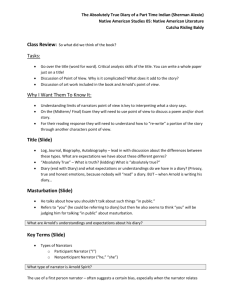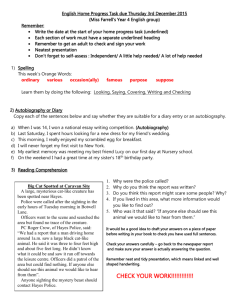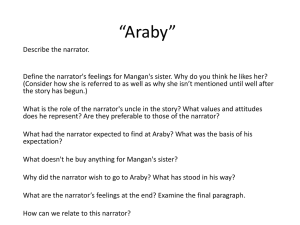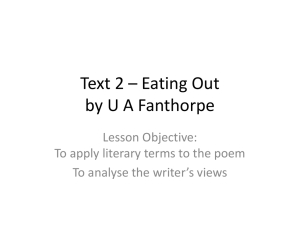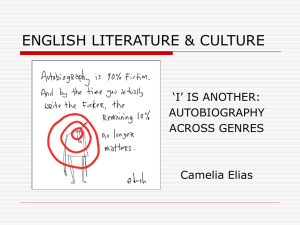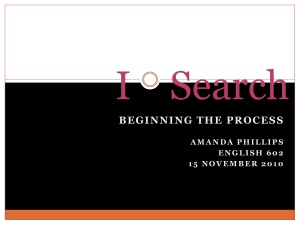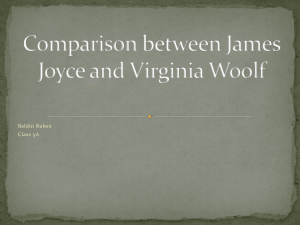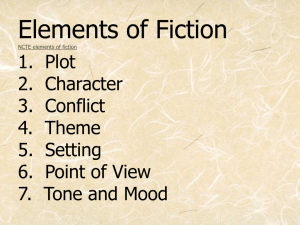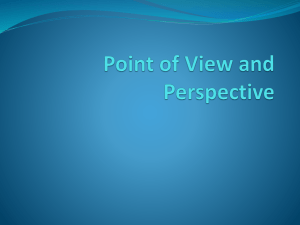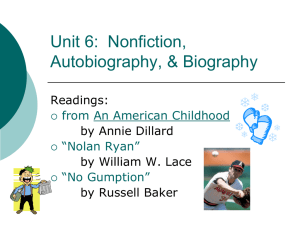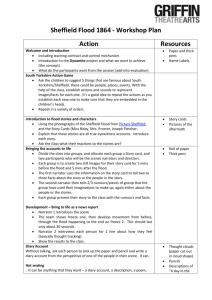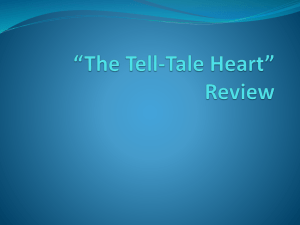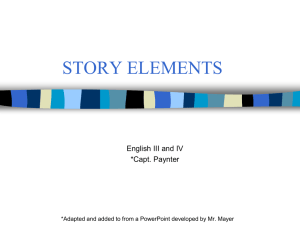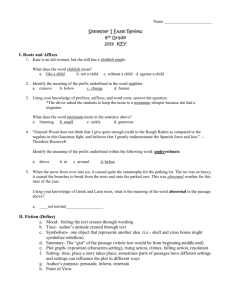Non-fiction is real - Uplift North Hills Prep | Uplift Education
advertisement
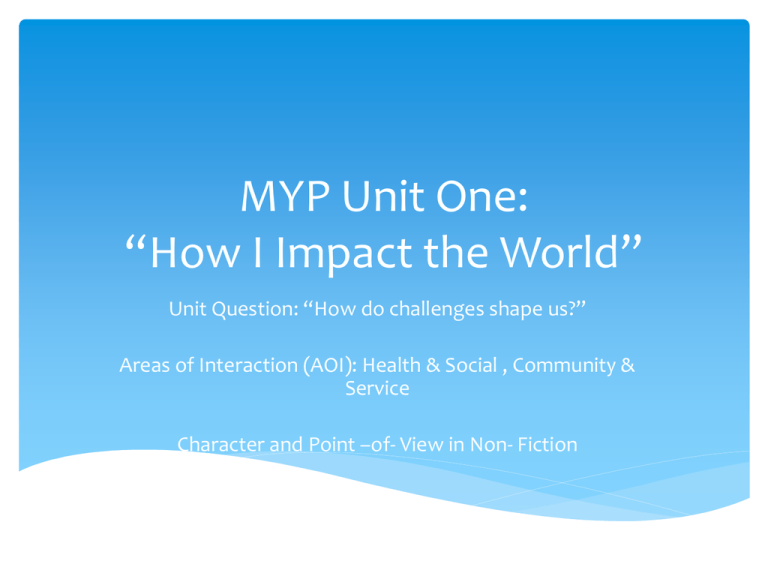
MYP Unit One: “How I Impact the World” Unit Question: “How do challenges shape us?” Areas of Interaction (AOI): Health & Social , Community & Service Character and Point –of- View in Non- Fiction Significant Concepts Non- fiction can come in many forms: personal narrative, memoir, autobiography, and biography. Everyone has a story to tell. Personal experiences help our foundations for thought and make us unique. There are different points-of-view Injustice, prejudice, and discrimination can come in many shapes and forms. One person can make a difference. Point of View: The vantage point from which a story is told. First- Person The narrator: Is a main or minor character in the story Uses the pronouns “I” and “me” Shares his/her subjective, or personal, view of other characters and events. Doesn’t know the thoughts/ feelings of other characters Third-Person Limited The narrator: Is not a characters in the story, but an outside observer Zooms in on the thoughts and feelings of one character Point of View 2 Third- Person Omniscient The narrator: Is not a character in the story, but an outside observer, whose observations can be objective, or unbiased. Is “all knowing”- he or she has access to all thoughts/ feelings and opinions to ALL other characters. Character Traits: Qualities that are used to describe how people look, talk, and act. *Physical Appearance *Speech, Thoughts, & Actions * Other Characters Character Motivation • The reasons behind the character’s actions. • Ex: Did the boy go volunteer at the animal shelter because he wanted to help the animals, or because a girl he liked also worked there?? Understanding Motivations: In order to understand the character’s motivations, the reader should consider: 1. The narrator’s direct comments. 2. The characters actions, thoughts, and values. 3. The readers own understanding of emotions that drive human behavior. Non- Fiction Writing that tells us about real people, places, and events. Written to convey factual information Non-fiction is real and can be verified by other sources Examples of Non-fiction writing: Newspaper articles Letters Essays Biographies Movie reviews Speeches advertising Autobiography Anne Frank: The Diary of a Young Girl A writer’s account of his/her own life Diary: Popular form of autobiography Almost always told from 1st person POV Similar to Memoir Appeals to the public in a more personalized wayrather than factual or technical First Person P.O.V Uses pronouns “I” and “me” The narrator only knows his/her thoughts, feelings, and motivations Non-Fiction- Autobiography Memoir- a form of autobiographical writing where a writer shares personal experiences & observations of significant events or people. Memoirs usually give insight into the impact of a historical event Textbook example: “My First Free Summer” pg. 116 Biography A TRUE account of a person’s life, written by another person. Usually told from THIRD person POV. Writers researches the subject in order to give accurate information. Textbook example: pg. 268 Who is Anne Frank? Key Facts: Born June 12, 1929 Jewish Born in Frankfurt, Germany Family moved to the Netherlands, in Amsterdam, when Hitler began to rise to power. Diary covers approximately 2 years in hiding Was arrested three days after last diary entry



